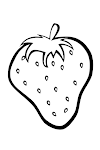Drawing a rainbow can be a fun and colorful activity. Whether you're a beginner or an experienced artist, here's a step-by-step guide to help you draw a coloring vibrant rainbow.

Materials required:
Drawing paper or sketchbook
Peneus (HB, 2B);
Eraser
Shaded brushes, markers, or pastels.
Stage 1: Essential Curve shape
Begin by drawing a huge streaming bow on the paper. This will be the primary bend of the rainbow. For this underlying portrayal, you'll need to involve a light pen as you'll refine the lines later.
Stage 2: Extra Curve
The primary curve attracts another circular segment lined up with the first. Proceed with this interaction, making a few concentric curves inside the past ones. The quantity of curves you draw is at your prudence and the space accessible from the paper.
Stage 3. Refine the state of the curve
The first curves are illustrated in more obscure, cleaner lines. Ensure the circular segments are equally separated and hold a consistent shape. This will make a light and warm rainbow.
Stage 4: Add Variety Strokes
Dole out various varieties to each curve of the rainbow. The rainbow generally has seven tones, organized from the deepest bend to the deepest: red, orange, yellow, green, blue, indigo, and violet. You can utilize pastels, markers, cat-shading colored pencils, or some other shading apparatuses you like.
Stage 5: Blend Tones
To improve the progress of varieties, grasp the mixing of neighboring blue tones. Softly cross over and delicately mix the tones utilizing the paint apparatuses. This makes smooth changes between various shades.
Level 6: Maecenas of life (discretionary)
Choose if you have any desire to add a subject to the bow. You can have a basic scene, mists, or sky. On the off chance that you choose to add a scene, utilize lighter shades to keep the rainbow concentration.
Stage 7: Contemplation (discretionary)
For added accentuation, you can paint a rainbow reflection. Make the first picture of the mirror under the rainbow, as though reflected in water. This will add a powerful component to your drawings.
Stage 8: Mists
To the two bows draw cushioned mists. Use round shapes and fluctuate the sizes to make flying and reasonable cloud arrangements. You can add concealing to the lower part of the mists to make a 3D impact.
Stage 9: The Final details
Survey your drawing and roll out the vital improvements. Make the curves light, the varieties splendid, and the creation all the more outwardly engaging. Add any extra subtleties or individual contacts you need.
Stage 10: Offer and Appreciate
Whenever you are happy with your bow drawing, think about imparting it to other people or putting it in a conspicuous spot. Make it a tomfoolery and inspiring piece of workmanship with the splendid and positive shade of the Rainbow Puzzle.
Painting rainbows is an incredible method for learning a variety of hypotheses and examination with blending strategies. Whether you're making a basic example or a more point-by-point representation, let your inventiveness stream as you rejuvenate this famous image on paper.






0 Comments